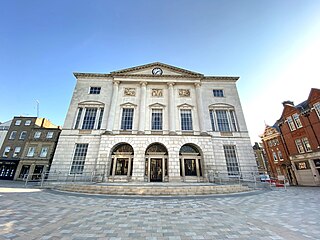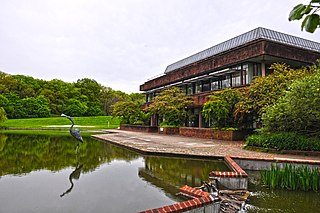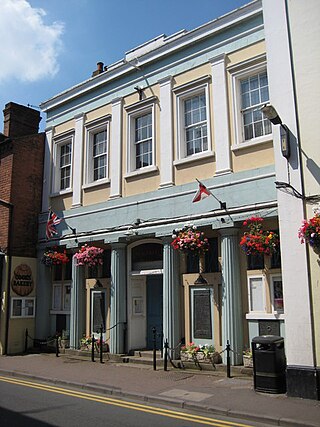
Worcestershire is a ceremonial county in the West Midlands of England. It is bordered by Shropshire, Staffordshire, and the West Midlands county to the north, Warwickshire to the east, Gloucestershire to the south, and Herefordshire to the west. The city of Worcester is the largest settlement and the county town.

Kidderminster is a market town and civil parish in Worcestershire, England, 20 miles (32 km) south-west of Birmingham and 12 miles (19 km) north of Worcester. Located north of the River Stour and east of the River Severn, in the 2021 census, it had a population of 57,400. The town is twinned with Husum, Germany.

Worcester is a cathedral city in Worcestershire, England, of which it is the county town. It is 30 mi (48 km) south-west of Birmingham, 27 mi (43 km) north of Gloucester and 23 mi (37 km) north-east of Hereford. The population was 103,872 in the 2021 census.

The area now known as Worcestershire has had human presence for over half a million years. Interrupted by two ice ages, Worcestershire has had continuous settlement since roughly 10,000 years ago. In the Iron Age, the area was dominated by a series of hill forts, and the beginnings of industrial activity including pottery and salt mining can be found. It seems to have been relatively unimportant during the Roman era, with the exception of the salt workings.
A county hall or shire hall is a common name given to a building that houses the seat of local government for a county.

Worcestershire County Council is the county council for the non-metropolitan county of Worcestershire in England. Its headquarters are at County Hall in Worcester, the county town. The council consists of 57 councillors and is currently controlled by the Conservative Party.

The Worcester City Art Gallery & Museum is an art gallery and local museum in Worcester, the county town of Worcestershire, England.

Worcestershire Parkway is a split-level railway station where the Cotswold and Cross Country lines cross near Norton, Worcester, England. It opened on 23 February 2020.

Shire Hall is a building complex located in Northgate Street in Warwick, England. It is the main office and the meeting place of Warwickshire County Council. It comprises both the original Shire Hall of 1758 and the more recent adjoining county council offices, both of which are Grade I listed buildings.

Worcester's early importance is partly due to its position on trade routes, but also because it was a centre of Church learning and wealth, due to the very large possessions of the See and Priory accumulated in the Anglo-Saxon period. After the reformation, Worcester continued as a centre of learning, with two early grammar schools with strong links to Oxford University.

The Shire Hall is a municipal building in Fore Street, Hertford, the county town of Hertfordshire, England. The building, which currently serves as a Magistrates' Court, is a Grade I listed building.

The Shirehall is a building on St Peter's Square, Hereford, England. It has been designated by English Heritage as a grade II* listed building.

The Shire Hall is a municipal facility in Tindal Square in Chelmsford, Essex. It is a Grade II* listed building.

County Hall is a municipal facility at Spetchley Road in Worcester, Worcestershire. It is the headquarters of Worcestershire County Council.

The Worcester Guildhall is a municipal building in the High Street, Worcester, England. It is a Grade I listed building.

Shirehall is a municipal facility in Abbey Foregate, Shrewsbury, Shropshire. The building, which is the headquarters of Shropshire Council, is just north of Lord Hill's Column.

The Old Shirehall was a municipal facility in Market Square, Shrewsbury, Shropshire. It was demolished in 1971 to make way for a retail and commercial centre.

The Old Town Hall is a municipal building in St Andrews Street, Droitwich Spa, Worcestershire, England. The structure, which was the headquarters of Droitwich Spa Borough Council, is a Grade II listed building.

The Corn Exchange is a commercial building in Angel Street, Worcester, Worcestershire, England. The structure, which is currently vacant, is a Grade II listed building.

Upton-upon-Severn Memorial Hall, formerly known as Upton-upon-Severn Town Hall, is a municipal building in Old Street in Upton-upon-Severn, a town in Worcestershire in England. The building, which serves as the offices and meeting place of Upton-upon-Severn Town Council, is a Grade II listed building.






















